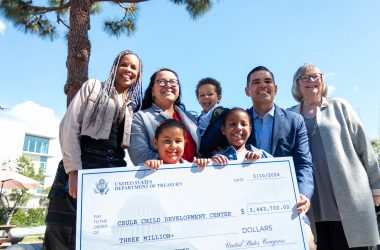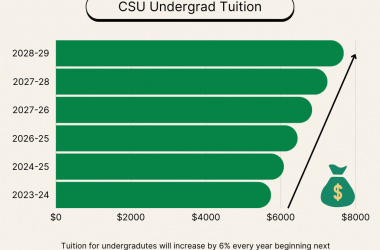Some students behind the resolution to bring a Dream Resource Center to campus believe that administration is not doing enough to make it a reality, however, the leader of the Assembly Bill 540 task force says otherwise.
Associated Students Inc. Senator-at-Large Erika Suarez, who is an AB 540 student and representative on the task force, said AB 540 students are not being made a priority by administration. AB 540, which was signed into law in 2001, allows eligible undocumented students to pay in-state tuition at public universities, according to the CSULB Office of Government, Legislative, and Community Relations.
Suarez, who is also a member of Future Underrepresented Educated Leaders, has worked alongside ASI Secretary for Cultural Diversity Elizabeth Zambrano, since the fall to lead the charge for creating a DRC at Cal State Long Beach.
“Our call right now to staff and administration is to stand up with us, to stand up for undocumented students and to help them succeed,” Suarez said. “This is an urgent issue, and the university is not making [AB 540] students a priority in their agenda.”
However, Manuel Perez, interim associate vice president for student services and AB 540 task force leader, said administration has accomplished more than it has in the past with regards to helping undocumented students. He said CSULB is heading in the right direction.
“I can’t speak on behalf of administration, but in my opinion, there is a strong possibility that this resource center will become a reality,” Perez said. “I am hopeful, and I think we are headed in that direction.”
The proposed DRC would provide a safe space and trained staff for undocumented students who attend CSULB because of AB 540. Undocumented students would be provided important resources and services, such as financial aid help and counseling that is pertinent to their circumstances.
In fall 2013, FUEL approached CSULB Interim President Donald Para to express the need for a DRC and other special services. In response, Para created a task force of about eight faculty and staff members, Perez said. Perez serves as the leader of this group while Suarez has the role of student representative.
“Our charge is to really help create and build a campus environment that is safe for AB 540 and undocumented students,” Perez said. “Finding support for these students is a high priority. I don’t take my job lightly and want to make sure all students on campus feel safe and served.”
He said that finding support for AB 540 students is a “high priority” for Para and the rest of administration.
“The fact that [Para] assigned a task force is enormous because that has never been done before,” Perez said. “It’s also tremendous that more funding has been put into training faculty to become official AB 540 allies.”
Perez said that there are currently six faculty and staff members who are certified in training other faculty in how to deal with the situations of undocumented students. In these training sessions, they discuss who these AB 540 students are, what challenges they face, and how faculty can help them in and out of the classroom.
When the faculty and staff members complete their training, they become official AB 540 allies and receive stickers to display in their offices. Perez said this has hopefully added to breaking down a barrier between these students and faculty.
In addition to official ally training, Perez said, the task force has been collaborating with the financial aid staff in Brotman Hall so they can better assist AB 540 students.
Although an official center does not exist yet, Perez said, the CSULB administration and the AB 540 task force have been working to increase services for undocumented students in resources that already exist.
“I wish the decision [to create a DRC on campus] was up to me, but it’s something the president and vice president will need to decide,” Perez said.
In response to undocumented students expressing the need for a “safe space” on campus, Perez said the task force is working with CSULB’s Counseling and Psychological Services to create a peer group. The group would be led by a staff member and invite participants to come together and talk about their challenges.
Similar centers exist at several colleges in the state, such as University of California, Berkeley and University of California, Los Angeles.
None of the 23 campuses in the Cal State University system currently have a DRC; however, Cal State Northridge recently gave students the approval to establish a center that will open by the end of the semester, according to the Daily Sundial.
Suarez said it is important to invest in improving the academic lives of AB 540 students.
“Undocumented students have to incriminate themselves and reveal their status in order for their needs to be met … They are not being adequately served,” Suarez said. “We are a special needs community here on campus, but the issue is currently too political.”




Pingback: This Week on Campus (April 14th to April 18th 2014) |